
Latest News From Arizona Mining Inc
|
||||||||||
|
||||||||||
|
||||||||||
|

|
||||||||||
|
||||||||||
|
||||||||||
|

 Release Date: Sep 1, 2016
Release Date: Sep 1, 2016
The Coronado National Forest is designing a system to augment environmental cleanup work previously performed at the Lead Queen Mine on the Sierra Vista Ranger District.
An unusually wet summer monsoon season in 2014 contributed to colored runoff in some drainages in the Patagonia Mountains. This included waters tinted white, yellow, orange and red flowing from the Lead Queen Mine adit, indicating release and oxidation of mineralized waters and sediment.
An environmental cleanup was completed in February, 2016 to reduce or eliminate downstream movement of waste rock containing elevated concentrations of arsenic, lead, and other heavy metals, and to prevent acid mine drainage from entering into Harshaw Creek.
Adits and shafts were closed with polyurethane foam or bat-friendly metal gates. Waste rock was placed in a consolidation cell and capped. Wire gabion baskets were installed downstream of the main adit. Burlap bags filled with zeolite were placed inside the baskets to remove heavy metals and trap sediment particles.
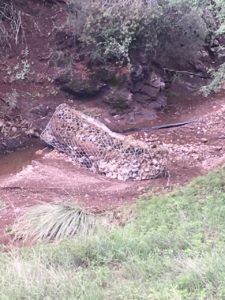 On or about August 9, a short-duration, high-intensity precipitation event on the order of a five- year event (based on National Oceanic and Atmospheric Administration point precipitation frequency estimates, and radar data) passed through the area, resulting in damage to the completed work.
On or about August 9, a short-duration, high-intensity precipitation event on the order of a five- year event (based on National Oceanic and Atmospheric Administration point precipitation frequency estimates, and radar data) passed through the area, resulting in damage to the completed work.
Forest engineering, minerals and geology staff and U.S. Geological Survey scientists inspected and evaluated the damage, and determined a more sustainable and robust system was needed to meet project goals.
Coronado National Forest personnel are assembling a team of U.S. Geological Survey scientists and U.S. Forest Service professionals with expertise in remediation of similar conditions. Once in place, the team will design the improved system and identify a timeline to implement the project.
Further developments will be announced through future news releases.

 United States Department of Agriculture Forest Service – Southwestern Region Coronado National Forest Arizona
United States Department of Agriculture Forest Service – Southwestern Region Coronado National Forest Arizona
The United States Department of Agriculture Forest Service begins this month an environmental cleanup of the Lead Queen Abandoned Mine (Site) situated within the Harshaw Creek watershed. The Site is located approximately six miles south of Patagonia, Arizona, within the Sierra Vista Ranger District of the Coronado National Forest and is only accessed by 4×4 or high clearance vehicles.
The objective of this cleanup is to reduce or eliminate the downstream movement of waste rock containing elevated concentrations of arsenic, lead, and other heavy metals, as well as acid mine drainage to Harshaw Creek.
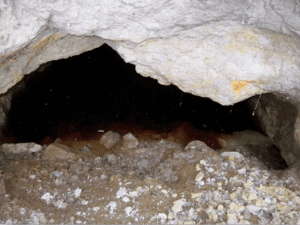
Lead Queen Adit
Past mining activities left behind abandoned horizontal openings (adits) and vertical openings (shafts), and littered the landscape with waste rock material.
The Forest Service hired an environmental firm to perform the cleanup and work should be completed by mid-February 2016. Environmental Cost Management, Inc (ECM) from California was hired for the amount of $361,689.58 of taxpayers’ money to clean up the abandoned mine site on public land.
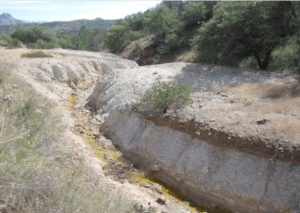
Lead Queen waste rock
The cleanup involves construction activities using heavy equipment to consolidate waste rock into a single underground contained area, cap the waste rock with native soil, and seal 4 of 6 mine openings such as adits and shafts. Polyurethane Foam (PUF) will be used to seal two adits and two shafts. The final PUF face will be covered with clean local soil and rock to prevent UV light degradation of the foam. The other two mine openings will be closed using bat-friendly gates.
In some areas of the Site, adits and shafts serve as conduits carrying large amounts of tunnel water which potentially cause floods in the downstream channels. Storm runoff carries concentrations of heavy metals stored in these adits and shafts on the surface.
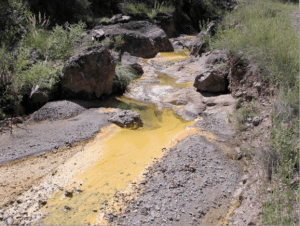
Lead Queen toxic, heavy metal drainage
The Site Cleanup will consist of excavating waste rock, hauling and placing waste rock material in a consolidation area, constructing a series of gabion walls, improving existing road for equipment access, constructing temporary access roads to mines, closing mine features, installing bat- friendly gates, and seeding and mulching of all disturbed areas.
A series of gabion walls will mitigate the transport of aluminum precipitate and red-orange sludge and sediment downstream of the Site and into the lower reaches of the Harshaw Creek watershed. These gabion walls will be installed in the drainage bottom at various locations downstream of the Site.
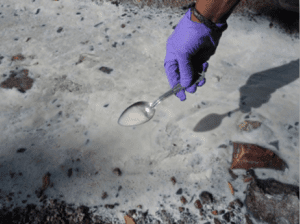
Sampling at Lead Queen mine site
The Forest Service is exercising its authority under the Comprehensive Environmental Response, Compensation, and Liability Act (CERCLA; 42 U.S.C. 9601 et seq.) to conduct the cleanup activities at the Site. The Time Critical Removal Action Approval Memorandum documents and explains the commencement of a CERCLA Removal Action at the Site. The Forest Service’s role is to protect the public health and welfare and the environment and to respond to a hazardous substance release on lands under the jurisdiction of the Forest Service, pursuant to the authority found in 42 U.S.C. 9604(a), Executive Order 12580, and 7 C.F.R. 2.60(a)(39).
For additional information about the cleanup, please contact:
Eli Curiel Jr., P.E.,
Project On-Scene Coordinator
USDA Forest Service
Coronado National Forest
300 West Congress Street Tucson, AZ 85701
(520) 388-8413
Monday-Friday, 9:00 AM – 4:30 PM

Forest Service Outlines Clean Up Plans for Abandoned Lead Queen Mine https://www.patagoniaalliance.org/forest-service-outlines-clean-up-plans-for-abandoned-lead-queen-mine/
Video: Leaking Historic Patagonia, Arizona Mines https://youtu.be/uEgaFhT5RXw
The U.S. Department of Agriculture (USDA) prohibits discrimination in all its programs and activities on the basis of race, color, national origin, age, disability, and where applicable, sex, marital status, familial status, parental status, religion, sexual orientation, genetic information, political beliefs, reprisal, or because all or part of an individual’s income is derived from any public assistance program. (Not all prohibited bases apply to all programs.) Persons with disabilities who require alternative means for communication of program information (Braille, large print, audiotape, etc.) should contact USDA’s TARGET Center at (202) 720-2600 (voice and TTY). To file a complaint of discrimination, write to USDA, Director, Office of Civil Rights, 1400 Independence Avenue, SW, Washington, DC 20250-9410 or call (800) 795-3272 (voice) or (202) 720-6382 (TTY). USDA is an equal opportunity provider and employer.
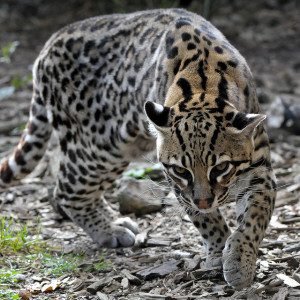
FOR IMMEDIATE RELEASE
Contact: Courtney Sexton, csexton@defenders.org, 202-772-0253
Wendy Russell, wendy@patagoniaalliance.org, 520-477-2308
Tucson, Ariz. —A district court in Arizona put the brakes on an environmentally destructive exploratory drilling project in the Coronado National Forest near Patagonia, Arizona, saying the Forest Service failed to conduct the appropriate environmental review before fast-tracking the approval of the “Sunnyside” project. In October 2014 conservation groups Defenders of Wildlife and the Patagonia Area Resource Alliance (PARA) filed a lawsuit claiming the Forest Service’s approval violated environmental laws and posed a threat to endangered species in the area.
Statement from Rob Peters, Defenders of Wildlife:

Pictured: Ocelot by Steve Harris
“This is a great victory for the many species of imperiled wildlife that call the Coronado National Forest and the Mountain Empire region home, especially the jaguar, Mexican spotted owl, ocelot and yellow-billed cuckoo, all of which are already at risk from multiple projects in the region.
“The court’s ruling against this destructive mining operation is the best thing that could have happened for the residents of Patagonia and for the incredible and diverse wildlife in the area.”
Statement from Wendy Russell, Patagonia Area Resource Alliance:
“We’re not going to stand by and let the Forest Service rubber-stamp these mining projects in the Patagonia Mountains. There’s too much at stake for both our community and wildlife. This is the second time we’ve had to take them to court, and the second time we’ve won.”
Defenders and PARA were assisted in the case by Roger Flynn, an attorney with the Western Mining Action Project. Flynn noted the importance of local residents’ right to participate in the Forest Service’s review of mineral projects on public land – residents were excluded from this process in the fast-tracking of the approval, a violation of federal law.
The Canadian mining company Regal Resources’ Sunnyside Project (an exploratory mining operation) involves drilling six exploratory holes for copper deposits up to 6,500 feet deep roughly five miles from the town of Patagonia, Arizona. The Forest Service issued a “categorical exclusion” decision which essentially fast-tracked the mineral drilling exploration and approved the project without involving the public or taking a hard look at the project’s impacts to endangered species. The decision authorized Regal Resources to run its drill rigs for at least five months in sensitive endangered species’ habitat. Loud mineral drilling operations and construction would occur 24 hours a day, seven days a week (using artificial lighting at night) with total project operations and reclamation lasting up to three years.
In January of this year, the Forest Service temporarily withdrew approval for the Sunnyside project until it completed consultation with the U.S. Fish and Wildlife Service to determine whether the project would significantly affect the western yellow-billed cuckoo, which is listed as a federally threatened species. After completing the consultation and concluding that there would be no significant effects, the Forest Service re-issued its approval for drilling to proceed in April, 2015.
###
Defenders of Wildlife is dedicated to the protection of all native animals and plants in their natural communities. With more than 1.2 million members and activists, Defenders of Wildlife is a leading advocate for innovative solutions to safeguard our wildlife heritage for generations to come. For more information, visit www.defenders.org and follow us on Twitter @DefendersNews.
The Patagonia Area Resource Alliance is a citizen watchdog organization that monitors the activities of mining companies, as well as ensures government agencies’ due diligence, to make sure their actions have long-term, sustainable benefits to our public lands, our water, and the town of Patagonia. For more information visit www.patagoniaalliance.org and follow us on Twitter @PARAalliance.
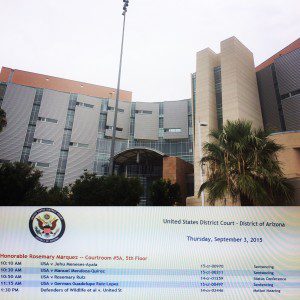
 The Patagonia Area Resource Alliance and Defenders of Wildlife were in federal court in Tucson last Thursday to present oral arguments against the Forest Service’s unlawful approval of a mining exploration project in the Patagonia Mountains on the Coronado National Forest.
The Patagonia Area Resource Alliance and Defenders of Wildlife were in federal court in Tucson last Thursday to present oral arguments against the Forest Service’s unlawful approval of a mining exploration project in the Patagonia Mountains on the Coronado National Forest.
Over 20 people attended the court hearing in support of PARA, Defenders of Wildlife and the Patagonia Mountains.
Canadian mining company Regal Resources’ Sunnyside Project involves drilling six exploratory holes for copper deposits up to 6,500 feet deep roughly five miles from the Town of Patagonia.
The Forest Service issued a “categorical exclusion” decision which essentially fast-tracked the mineral drilling exploration and approved the project without doing any environmental assessments. The decision authorized Regal Resources to run drilling for one year, with a seven month stoppage during the breeding seasons of the Mexican spotted owl and Yellow-billed cuckoo.
Defenders of Wildlife Lawyer Jay Tutchton argued that the Forest Service’s approval of the Sunnyside project violates environmental laws and poses a potential threat to local, endangered species. The extensive mineral drilling and construction would run 24 hours a day, seven days a week with total project operations and reclamation lasting up to 3 years.
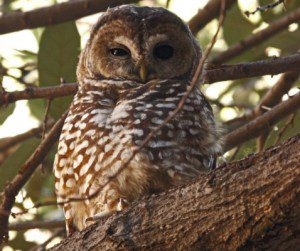
Mexican Spotted Owl ©Gooch Goodwin
The Patagonia Mountains support some of the world’s most threatened and endangered wildlife, including the jaguar, ocelot, lesser long-nosed bat, Mexican spotted owl, and yellow-billed cuckoo. Of particular concern is the Mexican spotted owl “Protected Activity Center” (PAC), prime habitat which is supposed to have the greatest protection by law and is occupied by the owls year-round. One of the project’s proposed drilling sites is less than 200 yards from a “nesting core area” of the PAC. The noise caused by the drills would be louder than a chainsaw and would disrupt about one-third of the Mexican spotted owls’ PAC, as well as the migratory corridors of jaguars and ocelots, Tutchton argued.
The Forest Service asked the court to dismiss the complaint. Forest Service lawyer Julia Thrower claimed the decision to grant a categorical exclusion complied with the National Environmental Protection Act and was not arbitrary or capricious.
“We’re optimistic that the judge will agree that the Forest Service’s attempt to avoid extra paperwork by skipping environmental assessments violates the law and places local, imperiled wildlife in even more jeopardy,” said Wendy Russell of the Patagonia Area Resource Alliance.
U.S. District Court Judge Rosemary Marquez said that she would take the matter under advisement and would issue her ruling before the proposed October 1 start date.

|
|
|
|
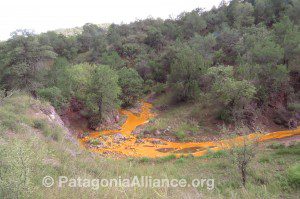

Toxic overflow from the historic Lead Queen mine in the Patagonia Mountains drains towards Harshaw Creek.
The Coronado National Forest, Sierra Vista Ranger District hosted a community meeting in Patagonia, Arizona on April 28. The Lead Queen Mine cleanup plan was by presented by Floyd Gray of United States Geological Survey (USGS), and Eli Curiel of the Forest Service.
The Lead Queen was an underground mine for lead, silver, zinc, copper and gold that started in 1898 and was abandoned after 1940. After heavy rains in September 2014, members of PARA discovered and reported the leaking mine site, located approximately 6 miles south of Patagonia, Arizona. In December, the Arizona Department of Environmental Quality served the Forest Service with two notices of violation for the toxic mine spill. The Forest Service issued a “Time Critical Removal Action Approval Memorandum” in February to mitigate the spill and its potential threats to public health and welfare, water and wildlife. Clean up was scheduled to start Spring 2015, before monsoon rains could potentially wash contamination further downstream.
Floyd Gray gave an overview of his findings from sampling and testing the water, soil, and waste rock around the abandoned mine site. It was also deduced that there is more than one source of leakage from the mine site. One source was identified by its extreme concentration of iron while the other source is high in aluminum. All of the tested samples came back with very high levels of contamination from hazardous heavy metals such as arsenic and lead. In one water sample, the heavy metal levels were 20 times higher than the allowable drinking water standards. It was also determined that the mine contamination traveled 9/10th of a mile downstream.
The studies at the Lead Queen site to determine all of the sources of contamination has lead to a larger, ongoing study of the watersheds in the Patagonia Mountains by USGS and the Forest Service.
Eli Curiel detailed the plans to plug the six abandoned tunnels and shafts of the Lead Queen mine site with polyurethane foam. The waste rock piles laced with toxic heavy metals will be consolidated into a new location above the watershed and capped with clean fill to prevent future contamination. The polluted sediment in the waterway will be removed with the aid of a series of eleven gabion walls across the drainage filled with zeolite to capture and hold the heavy metals. The clean up area comprises five acres on the Coronado National Forest in the Patagonia Mountains. The mine site will require ongoing monitoring and maintenance, essentially forever.
The cost to taxpayers has not yet been determined. The clean up project has not yet gone out to bid. It’s expected to take up to 120 days with work possibly starting this summer.
More information can be obtained from the Forest Service Project On-Scene Coordinator, Eli Curiel at 520-388-8413.

Mexican Spotted Owl ©Gooch Goodwin
At the public meeting, an update was given on Regal Resources’ Sunnyside mining exploration project in the Patagonia Mountains by Forest Service Geologist Mindy Vogel. Conspicuously absent from Vogel’s overview was the ongoing litigation between Defenders of Wildlife and PARA against the Forest Service and US Fish and Wildlife for the unlawful approval of this project.
For the present time, no work is allowed at the Sunnyside site between March 1 and Oct 1, 2015 because of nesting Mexican spotted owls and Yellow-billed cuckoos in the area, according to the Forest Service Decision Memo.
No questions were permitted during any of the presentations. Audience members were required to seek out Forest Service and USGS personnel after all presentations were complete to ask questions. It is a format that we find effectively prevents members of the community from getting all of their questions answered and learning the most information possible.
Forest Service geologist Margie DeRose gave an overview and an update of the expected timeline of the AZ Mining Inc (aka Wildcat Silver, AMI) Hermosa mining exploration proposal in the Patagonia Mountains on the Coronado National Forest. The final Environmental Assessment and draft decision is estimated for release in October 2015 – over a year past the original timeline. A 45 day public objection period will follow.
Meanwhile, AZ Mining Inc / Wildcat Silver board chairman Richard Warke is privately funding more mine exploration drilling on their privately owned land. AZ Mining Inc / Wildcat Silver is now claiming that deposits for lead, zinc and silver exist for an additional mine at the Hermosa project, referred to as Hermosa North West.

 The Forest Service sent out a notice on April 10th that a new Decision Memo has been issued for the Regal Resources Sunnyside project, an exploratory mineral drilling proposal in the Humboldt Canyon and Alum Gulch areas of the Patagonia Mountains on the Coronado National Forest.
The Forest Service sent out a notice on April 10th that a new Decision Memo has been issued for the Regal Resources Sunnyside project, an exploratory mineral drilling proposal in the Humboldt Canyon and Alum Gulch areas of the Patagonia Mountains on the Coronado National Forest.
The emailed notice from the Forest Service stated that exploratory drilling can start once “the operator provides a reclamation performance bond, incorporates the design features from the decision document, and the Plan of Operations is approved.”
The notice is misleading because it fails to mention two important facts.
No drilling can take place between March 1 to September 30 to avoid potential disturbance to the Mexican spotted owl and Yellow-billed cuckoo during their breeding season, as stated in the Decision Memo.
Additionally, PARA and Defenders of Wildlife are still in litigation against the Forest Service and US Fish and Wildlife Service for this unlawful approval of the Sunnyside Proposal. Read more…
The Sunnyside mineral drilling proposal is located approximately 7 miles south of the town of Patagonia. For more information concerning this decision, please contact Mindy Sue Vogel, Geologist, Coronado National Forest, 300 W. Congress Street, Tucson, AZ 85701, 520-388-8327, msvogel@fs.fed.us.
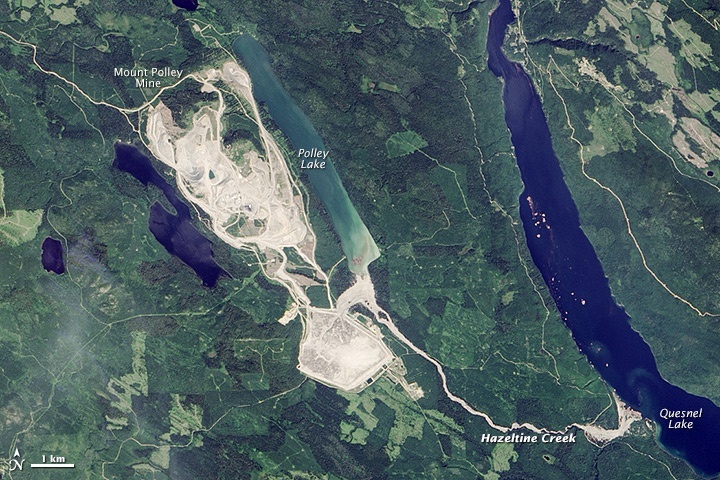
EARTHWORKS PRESS RELEASE
A coalition of more than 40 environmental and community groups today sent letters to the U.S.Environmental Protection Agency (EPA), Bureau of Land Management (BLM), and U.S. Forest Service (USFS) urging they take immediate action to investigate threats posed by mine waste dams and impoundments in the United States.
In the wake of the August 2014 Mount Polley mine waste disaster in Canada which released roughly 24.4 million cubic meters of mine waste into the Fraser River watershed, a government-commissioned independent investigative panel determined that current global standard practice for mine waste disposal is fundamentally flawed and that future failures at other mines are simply a matter of time. To date, U.S. regulators have taken no action to assess the risks posed by mines in the U.S.

Aerial view of the earthen dam at Mount Polley Mine in British Columbia that breached on August 4, 2014, sending contaminated water into nearby lakes.
“The most important finding of the Mount Polley investigation is that catastrophic mine waste dam failures can and will happen anywhere, unless we apply the lessons of Mount Polley and act to prevent them,” said Dr. David Chambers, president of the Center for Science in Public Participation. He continued, “Preventing these failures is critical to protecting the public from environmental and financial impacts, since there is no financial surety for catastrophic tailings dam accidents.”
“The best available science now warns that business as usual at modern mines means more mine waste catastrophes. That’s unacceptable,” said Jennifer Krill, Executive Director of Earthworks. “To protect clean water, communities and the environment, we need regulators in the United States to act on the lessons learned from the Mount Polley disaster.”
The government-commissioned, independent investigation into the Mount Polley dam failure concluded that the dam design was at fault, and predicted that an estimated 2 additional tailings dam failures could occur every 10 years in British Columbia if business continues as usual.
There are 839 tailings dams in the United States according the U.S Army Corps of Engineers. Mining companies worldwide use Knight-Piésold, the engineering firm that designed and built the tailings dam that failed at Mount Polley — including at the proposed Pebble copper-gold mine in the watershed of Alaska’s Bristol Bay.
Large tailings dams built to contain mining waste, among the largest structures in the world, must stand in perpetuity. Yet there is no federal agency in the U.S., nor global entity, responsible for oversight of tailings dam safety. The few tailings dam safety and construction requirements that exist were developed from those intended for water retention dams, not for mine tailings dams.
Farther south, the Mount Polley disaster has spurred worries about a proposed silver mine on U.S. Forest Service land only about 7 miles upstream of the tourist town of Patagonia, Arizona.
“Our town’s entire water supply is from groundwater, and the tailings dam would feed into the creek running through the town,” Coordinator Wendy Russell of the Patagonia Area Resource Alliance. “We already have acid leaks from historical mines,” she said. “We don’t need a Mount Polley here.”
FOR MORE INFORMATION
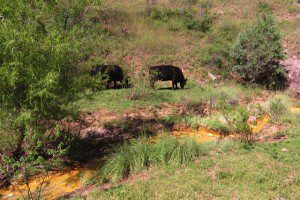
FOR IMMEDIATE RELEASE
Patagonia, Arizona – Yesterday, the Southwestern Regional Office of the US Forest Service issued an Action Memo for “Time Critical” clean up of the abandoned Lead Queen mine in the Patagonia Mountains on the Coronado National Forest, approximately 6 miles south of the town of Patagonia, Arizona.
Members of the Patagonia Area Resource Alliance (PARA) discovered the abandoned mine over-flowing with toxic, orange sludge into a tributary of Harshaw Creek, last September. PARA documented the spill and notified authorities. The Harshaw Creek tributary eventually flows into the Town of Patagonia, Sonoita Creek and Patagonia Lake.
As the land owners of the Lead Queen mine, the Forest Service was issued two Notice of Violations from the Arizona Department of Environmental Quality: “Addition of a pollutant to navigable waters from a point source without a permit,” and “Discharge of storm water associated with an industrial activity without a permit.”
 Test results showed off-the-chart concentrations of lead and arsenic in water, soil and waste rock samples at the Lead Queen site. High concentrations of zinc, copper and aluminum were also found. All of these heavy metals are listed as “hazardous substances” and can cause serious – or even deadly – health issues. The red-orange color of the sludge was due to extreme concentrations of iron.
Test results showed off-the-chart concentrations of lead and arsenic in water, soil and waste rock samples at the Lead Queen site. High concentrations of zinc, copper and aluminum were also found. All of these heavy metals are listed as “hazardous substances” and can cause serious – or even deadly – health issues. The red-orange color of the sludge was due to extreme concentrations of iron.
The USFS document stated the clean up aims to reduce potential exposure of the hazardous heavy metals to “human populations, animals or the food chain.”
“This is a good start, but I’ve seen many more abandoned mines in the Patagonia Mountains that also need to be cleaned up. The mining industry has a well-earned reputation for just walking away from mines when they’re done.” Gooch Goodwin, native Patagonian and PARA board member.
 The Forest Service document also acknowledges that the “Patagonia Mountains have high levels of biodiversity and are home to a variety of species protected under the Endangered Species Act including jaguar, ocelot, lesser long-nosed bat, Mexican spotted owl, western yellow-billed cuckoo, Sonora tiger salamander, and the northern Mexican gartersnake.”
The Forest Service document also acknowledges that the “Patagonia Mountains have high levels of biodiversity and are home to a variety of species protected under the Endangered Species Act including jaguar, ocelot, lesser long-nosed bat, Mexican spotted owl, western yellow-billed cuckoo, Sonora tiger salamander, and the northern Mexican gartersnake.”
It additionally states, “the area is best-known and most popular places for birding in the U.S. Bird enthusiast who come from all over the world to catch a glimpse of more than 300 species of birds, including many Neotropical species that migrate, nest, and live in this unique habitat.”
Clean up of the five acre site is expected to start Spring 2015 and be completed before the coming monsoon season to avoid erosion and flushing of heavy metals further downstream.
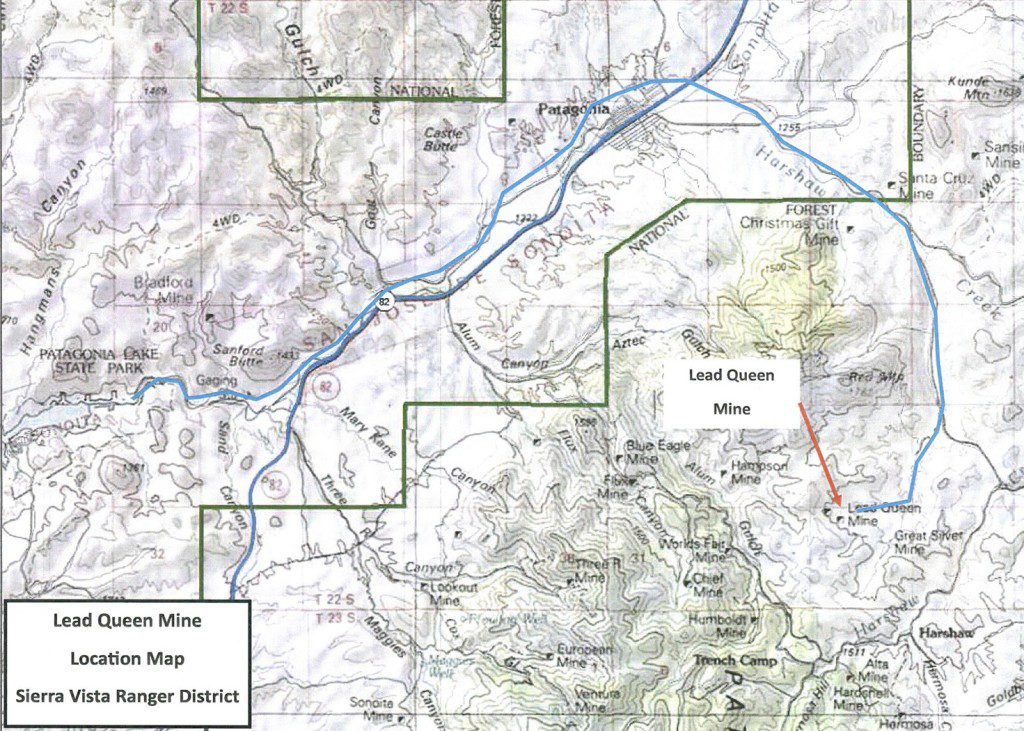
USFS map of Lead Queen mine location
Read USFS Lead Queen Mine Removal Action Memorandum
For further information regarding the USFS Removal Action Memorandum, please contact Eli Curiel, P.E., On-Scene Coordinator, at 520-388-8413; or Maria McGaha, P.E., Regional Environmental Engineer, at 505-842-3837.
###
The Patagonia Area Resource Alliance is a citizen watchdog organization that monitors the activities of mining companies, as well as ensures government agencies’ due diligence, to make sure their actions have long-term, sustainable benefits to our public lands, our water, and the town of Patagonia. For more information visit www.patagoniaalliance.org and follow us on Twitter @PARAalliance.

FOR IMMEDIATE RELEASE
Tucson, Ariz. — Today the U.S. Forest Service temporarily put the brakes on an environmentally hazardous mining project in southern Arizona’s Coronado National Forest that it previously approved in August. The Forest Service’s decision follows a similar move by the U.S. Fish and Wildlife Service, which had originally given the project the green light in August and then withdrew its approval in December. The agency decisions to withdraw their approvals of the Canadian mining company Regal Resources’ “Sunnyside Project” are based on the project’s potential violation of multiple environmental laws.

photo by Nathan Rupert
“The agencies knew from the beginning that this project could have a devastating impact on the local wildlife and habitat in this unique corner of the country,” said Rob Peters of Defenders of Wildlife. “The Coronado is home to an incredible diversity of imperiled species like the jaguar, ocelot and yellow-billed cuckoo, all which are already at risk from multiple projects in the region.”
“No one understood why they approved this project to begin with, but for the sake of Patagonia’s residents and wildlife, we are glad to see that they’ve reconsidered,” added Peters.
In October conservation groups Defenders of Wildlife and the Patagonia Area Resource Alliance filed a lawsuit claiming the federal agencies’ approvals the Sunnyside project violated environmental laws and posed a threat to endangered species and the safety of drinking water for local residents.
“Sunnyside could have been a disaster not only for our region’s unique wildlife, but also for the residents living directly downstream and the municipal watershed of the town of Patagonia,” said Wendy Russell of the Patagonia Area Resource Alliance. “Projects like Sunnyside use and abuse a tremendous amount of the local water supply and create long-term destruction of wildlife habitat. The people and wildlife of our national forests deserve more, and the agencies know that.”
Click to hear from environmental attorneys on why they sue.
###
Contact: Courtney Sexton, csexton@defenders.org, 202-772-0253
Wendy Russell, wendy@patagoniaalliance.org, 520-477-2308
Defenders of Wildlife is dedicated to the protection of all native animals and plants in their natural communities. With more than 1.1 million members and activists, Defenders of Wildlife is a leading advocate for innovative solutions to safeguard our wildlife heritage for generations to come. For more information, visit www.defenders.org and follow us on Twitter @DefendersNews.
The Patagonia Area Resource Alliance is a citizen watchdog organization that monitors the activities of mining companies, as well as ensures government agencies’ due diligence, to make sure their actions have long-term, sustainable benefits to our public lands, our water, and the town of Patagonia. For more information visit www.patagoniaalliance.org and follow us on Twitter @PARAalliance.
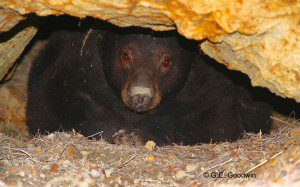
The AZ Mining Inc (Wildcat Silver) Hermosa drilling project timeline was just pushed back–now almost a full year behind the previous schedule. We couldn’t have planned a better holiday gift! The release of the Hermosa Environmental Assessment (EA) and Draft Decision is now estimated for July 2015, which would then trigger a 45 day deadline for objections. If you commented on the Hermosa project, you will be able to participate in the objection process. PARA has successfully delayed AZ Mining Inc / Wildcat Silver–and all other mining companies–from drilling on public land in the Patagonia Mountains since 2011.

Save my home in the Patagonia Mountains. ©Gooch Goodwin
Billie the Black Bear makes her home in the Patagonia Mountains. Open pit mining would destroy her home and the water that we all depend upon. Your gift to the Patagonia Area Resource Alliance empowers us to keep new mining activity off of public land in the Patagonia Mountains–successfully since 2011!
Read more about our most recent Activities and Accomplishments.
Your donations also make it possible for us to organize community involvement and action so that we can protect the Patagonia Mountains, wildlife and habitats, our waterways and our communities.
Please consider making a donation to PARA this year to support and grow this critical work in the Patagonia Mountains: patagoniaalliance.org/donations/
A big thank you to everyone who has already donated this year!
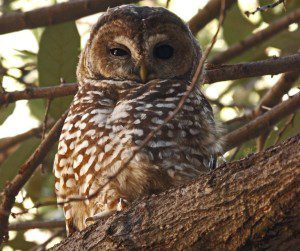
Mexican Spotted Owl © Glen E Goodwin
The Forest Service approved the Sunnyside mineral drilling proposal by Regal Resources in the Patagonia Mountains, even though it directly threatens the imperiled Mexican spotted owl in the most sensitive area of their habitat–their roosting and nesting areas. As a result, we filed suit in federal court with Defenders of Wildlife for that unlawful approval, which violates environmental laws and poses potential threats to additional endangered species and the safety of drinking water for local residents.
We are very fortunate to have a group of amazingly committed community members and generous donors supporting our work.
We’ve just exceeded our year-end goal of raising $19,000! We on our way to reaching our entire 2015 operating budget. Thank you!
The work necessary to keep mining out of the Patagonia Mountains a reality is only possible because of your financial support.
Consider making an automatic, monthly donation to PARA on your credit card through PayPal.
Every single contribution makes a sizable difference to our organization and ultimately for our community.
It is only because of the generous support from people like you that we can undertake this critical work. Thank you!

FOR IMMEDIATE RELEASE
October 29, 2014
Contact: Courtney Sexton, csexton@defenders.org, 202-772-0253
Wendy Russell, wendy@patagoniaalliance.org, 520-477-2308
TUCSON, ARIZ. – Defenders of Wildlife and the Patagonia Area Resource Alliance today asked a federal court to hold the United States Forest Service and United States Fish and Wildlife Service accountable for their unlawful approval of the “Sunnyside” mineral exploration drilling project in southern Arizona’s Coronado National Forest, in the Alum Gulch area of the Patagonia Mountains. The groups say the approval of the Canadian mining company Regal Resources’ Sunnyside Project violates environmental laws and poses a potential threat to endangered species and the safety of drinking water for local residents. The Sunnyside Project involves drilling multiple exploratory holes up to 6,500 feet deep in one of the most biologically diverse mountain ranges in Arizona. The extensive drilling and construction would run 24/7 for months on end, and the total project operations could last up to 3 years.
The Coronado National Forest, the Patagonia Mountains and the watersheds in this region support some of the world’s most imperiled wildlife, including the jaguar, ocelot, lesser long-nosed bat, Mexican spotted owl, and yellow-billed cuckoo. Of particular concern is the Mexican spotted owl “Protected Activity Center” (PAC) in the Alum Gulch area, a site which is supposed to have the greatest protection of the law. One of the project’s proposed drilling sites is only one-tenth of a mile from the “nesting core area” of this PAC.
“The potential damage from the Sunnyside Project, especially coupled with other damaging mining projects in the region, could have devastating impacts on this imperiled wildlife and the habitat they depend on, as well as the water supply for local residents,” said Rob Peters of Defenders of Wildlife. “This is a national forest and imperiled wildlife and their habitats on the forest should be protected— not polluted by expanded drilling operations.”

Ocelot, Leopardus pardalis. photo US FWS
Patagonia area residents are dependent on water originating from Alum Gulch, an area which is also designated as critical habitat for the jaguar and Mexican spotted owl. The imperiled ocelot, lesser long-nosed bat, and yellow-billed cuckoo have also been observed near the project area.
“The Sunnyside Project could have tremendous adverse impacts on local wildlife and local residents, affecting the floodplains and the municipal watershed of the town of Patagonia,” said Wendy Russell of the Patagonia Area Resource Alliance. “The drilling will require 12,500 gallons of water per day, an amount approximately equal to ten percent of the daily water usage of the Town of Patagonia. This project threatens not only endangered wildlife, but our community’s water, health and safety.”
Click to hear from environmental attorneys on why they sue.
###
Defenders of Wildlife is dedicated to the protection of all native animals and plants in their natural communities. With more than 1.1 million members and activists, Defenders of Wildlife is a leading advocate for innovative solutions to safeguard our wildlife heritage for generations to come. For more information, visit www.defenders.org and follow us on Twitter @DefendersNews.
The Patagonia Area Resource Alliance is a citizen watchdog organization that monitors the activities of mining companies, as well as ensures government agencies’ due diligence, to make sure their actions have long-term, sustainable benefits to our public lands, our water, and the town of Patagonia. For more information visit www.patagoniaalliance.org and follow us on Twitter @PARAalliance.
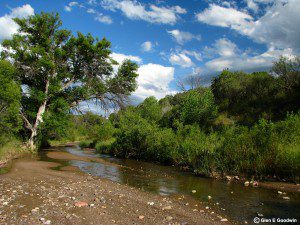
Patagonia Area Resource Alliance
Earthworks
October 28, 2014
 Patagonia – The Hermosa silver mine proposed inside Patagonia, Arizona’s Municipal Supply Watershed could deplete the town’s drinking water and perpetually contaminate area groundwater with acid mine drainage, according to a new peer-reviewed report.
Patagonia – The Hermosa silver mine proposed inside Patagonia, Arizona’s Municipal Supply Watershed could deplete the town’s drinking water and perpetually contaminate area groundwater with acid mine drainage, according to a new peer-reviewed report.
Reviewed* by a USGS scientist and released by the Patagonia Area Resource Alliance and Earthworks, the study also concludes that drinking water wells of surrounding residents are also threatened.
“A mine that threatens our town’s drinking water is a mine that shouldn’t be built,” said Wendy Russell of the Patagonia Area Resource Alliance. She continued, “In Arizona, water is more precious than silver, and especially so after more than a decade of drought.”
Proposed by Canadian exploration company AZ Mining Inc (Wildcat Silver) – a company with no experience operating a mine – Hermosa is proposed at a time when Patagonia is already concerned with dropping groundwater levels and increasing concern about future water supplies.
The 4,000 foot wide and 1,500 foot deep Hermosa silver and manganese mine would consume 670 million to 1.2 billion 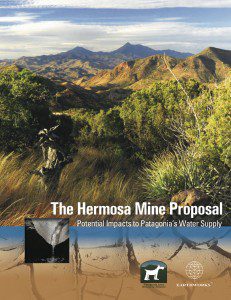 gallons of groundwater per year – up to 53 times the amount of water the town uses today — to run the mine within the upper reaches of Harshaw Creek, a portion of Patagonia’s Municipal Supply Watershed. This water consumption will lower the recharge rates for the aquifer on which the town depends, and is also likely to produce acidic runoff, requiring ongoing treatment in perpetuity.
gallons of groundwater per year – up to 53 times the amount of water the town uses today — to run the mine within the upper reaches of Harshaw Creek, a portion of Patagonia’s Municipal Supply Watershed. This water consumption will lower the recharge rates for the aquifer on which the town depends, and is also likely to produce acidic runoff, requiring ongoing treatment in perpetuity.
“If the U.S. Forest Service were to permit the Hermosa mine, this report shows it would jeopardize our community’s drinking water. And for what? For foreign shareholders’ silver,” said Wendy Russell. She continued, “This is a mine proposal that just doesn’t make sense for our community who would actually have to live with it.”
The mine is proposed within the Coronado National Forest, and therefore subject to the 1872 Mining Law. Federal land managers interpret the 1872 Mining Law to require them to permit mines, no matter if the land is better used for other purposes – like protecting a town’s drinking water supply watershed.
“Because the Hermosa mine proposal threatens area water supplies, it obviously should not be permitted,” said report author Pete Dronkers of Earthworks. He continued, “That it’s being considered at all is a strong argument for reforming the 1872 Mining Law to allow the consideration of other potential land uses.”
The report also evaluates the nature of groundwater depletion that is likely under the proposed mine plan, characterizes the impacts of such, and also analyses other known adverse impacts, such as air pollution, endangered species, and other cumulative impacts.
The report, including an executive summary, can be found at: patagoniaalliance.org/report-hermosa-mine
Fact Sheet
Full Report
Contact:
Pete Dronkers, Earthworks
(775) 815-9936, pdronkers@earthworksaction.org
Wendy Russell, Patagonia Area Resource Alliance
(520) 477-2308, wendy@patagoniaalliance.org
* An earlier version of this press release indicated that a USGS scientist “endorsed” this report. We were informed by the United States Geological Survey that the agency only endorses their own reports and documents.
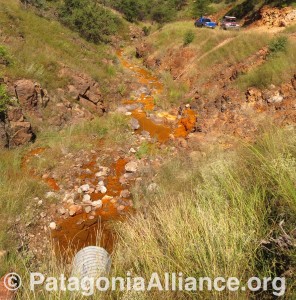
FOR IMMEDIATE RELEASE
Contact: Courtney Sexton, 202.772.0253, csexton@defenders.org
Wendy Russell, 520.477.2308, Wendy@PatagoniaAlliance.org

Bright orange water overflowing from the historic Trench mine, twice reclaimed by Asarco and now owned by the State of Arizona.
TUCSON, ARIZ. – Contaminants from a mine spill in Cananea, Sonora earlier this summer have likely reached the San Pedro River flowing into Arizona. And with recent storms, old copper and silver mine sites near Patagonia are leaking bright red contaminants into local streams. These toxic reminders of our mining history have the potential to wreak havoc on local water supplies and wildlife in the Coronado National Forest, one of the most biologically diverse areas in the world.
“The Coronado National Forest, the “Sacred” Santa Ritas, the San Pedro River Valley, the Patagonias and all of the Sky Islands nourish some of the most incredible and endangered biodiversity in the world, including jaguars, ocelots, yellow-billed cuckoos and Gila topminnows,” said Eva Sargent, director of Southwest Programs for Defenders of Wildlife. “This is a place that must be conserved, not a place for the destructive practice of mining and its toxic byproducts that ruin our public landscapes and pollute our waters.”

Toxic overflow from the historic Lead Queen mine in the Patagonia Mountains drains towards Harshaw Creek.
“All this toxic runoff is a prime example of why new mines should not be approved in the mountains of southern Arizona,” added Wendy Russell of the Patagonia Area Resource Alliance. “There are already approximately 130 abandoned mines in the Patagonia Mountains, many with eroding tailings and leaking tunnels discharging toxins. With heavy rainfall, that toxic discharge overflows into water systems like Harshaw Creek and Alum Gulch in the Santa Cruz watershed and threatens both local communities’ drinking water and already endangered fish and wildlife. With the state and federal governments seemingly incapable of cleaning up old polluting mines in the Patagonia Mountains, we have no confidence in their abilities to regulate new mining activity to protect our community’s drinking water, health and safety.”
###
Defenders of Wildlife is dedicated to the protection of all native animals and plants in their natural communities. With more than 1.1 million members and activists, Defenders of Wildlife is a leading advocate for innovative solutions to safeguard our wildlife heritage for generations to come. For more information, visit www.defenders.org<http://www.defenders.org/> and follow us on Twitter @DefendersNews<http://twitter.com/DefendersNews>.
The Patagonia Area Resource Alliance is a citizen watchdog organization that monitors the activities of mining companies, as well as ensures government agencies’ due diligence, to make sure their actions have long-term, sustainable benefits to our public lands, our water, and the town of Patagonia. For more information visit www.patagoniaalliance.org<http://www.patagoniaalliance.org>
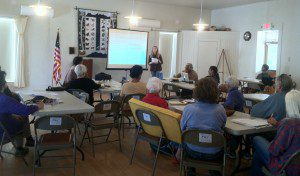
PARA, Jenny Neeley and Sergio Avila from Sky Island Alliance teamed up again to host a NEPA comment workshop at Cady Hall in Patagonia on March 26, 2014. Discussed were the potential issues of the Forest Service’s Draft Environmental Assessment of the AZ Mining Inc / Wildcat Silver / Arizona Minerals Hermosa mining exploration proposal and how to comment effectively on it.
 Jenny Neeley reprised her role as our National Environmental Policy Act (NEPA) expert for tips on filing public comments on the Hermosa draft Environmental Assessment (EA) released by the Coronado National Forest. The purpose of an Environmental Assessment is to determine whether the impacts of a project will be significant. The goal for our comments on the draft EA is to demonstrate that the Hermosa project impacts will be significant so that the Forest Service conducts a more detailed and comprehensive Environmental Impact Statement. Read more tips for writing comments here.
Jenny Neeley reprised her role as our National Environmental Policy Act (NEPA) expert for tips on filing public comments on the Hermosa draft Environmental Assessment (EA) released by the Coronado National Forest. The purpose of an Environmental Assessment is to determine whether the impacts of a project will be significant. The goal for our comments on the draft EA is to demonstrate that the Hermosa project impacts will be significant so that the Forest Service conducts a more detailed and comprehensive Environmental Impact Statement. Read more tips for writing comments here.
PARA board member Cliff Hirsch gave a summary of the expected activities proposed by the AZ Mining Inc / Wildcat Silver / Arizona Minerals Hermosa exploratory drilling project located 6 miles southeast of the Town of Patagonia. The project activities encompasses 7350 acres of both Coronado National Forest and private land. It is also expected to use 3,525,800 gallons of groundwater pumped from within the Town of Patagonia Municipal Supply Watershed. Click here for talking points and Hermosa project summary.
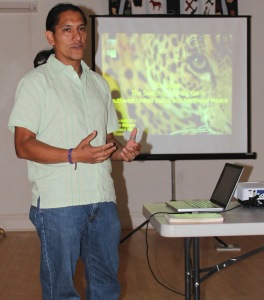
SIA Biologist, Sergio Avila
SIA biologist Sergio Avila discussed the amazing biodiversity found in the Patagonia Mountains during the Bioblitz event conducted in April 2013. View the Bioblitz report here. The results from the Bioblitz and the ongoing wildlife tracking in the Patagonia Mountains demonstrate the importance of the Patagonias as a wildlife corridor and biological hotspot in the sky island mountain ranges of southern Arizona and northern Mexico. Click for a list of Federally Threatened, Endangered and Sensitive Species in the Patagonia Mountains of the Coronado National Forest in southern Arizona.
The Hermosa draft Environmental Assessment is available at the Patagonia Public Library and online at the Forest Service website on the Hermosa project page: http://www.fs.fed.us/nepa/nepa_project_exp.php?project=41158.
Thank you everyone for your participation. The Forest Service received 200 public scoping comments on the Hermosa Plan of Operation. Let’s send them 200 more on the draft EA! Deadline to submit comments is Friday, April 11, 2014.
By Jenny Neeley
1. Consider whether the effects significant. If they are, then the Forest Service must prepare a more detailed Environmental Impact Statement (EIS) rather than an Environmental Assessment (EA). When deciding whether the impacts are “significant” NEPA implementing regulations (40 CFR § 1508.27) require that agencies consider both:
2. Make your comments “substantive” and specific. The Forest Service is required by law to respond to all “substantive” comments submitted during the public comment period; the more specific and focused your comments are, the more detailed the response must be from the agency. Comments that simply say “I am opposed to this project” will not, by themselves, require a response from the agency.
3. Include the specific sections, pages and/or topics you are referencing in the Draft EA. To the extent you can, direct your comments to specific sections, pages or topics in the Draft EA, recognizing that some comments may be addressing missing or incomplete information, or even missing topics, that you feel should be addressed.
4. Make your letter personal! Your personal connection to the Patagonia Mountains and surrounding area is an incredibly important part of your comment letter. You should explain how will you be personally impacted if this proposal moves forward. Include information about how it will affect your home, your land, your family, and/or your business and livelihood. This is a great way to start your letter and to frame the rest of your comments, and will help get the Forest Service’s attention.
See our NEPA Resources page: http://www.patagoniaalliance.org/nepa-resources/
More information about Wildcat Silver at: http://www.patagoniaalliance.org/wildcat-silver/
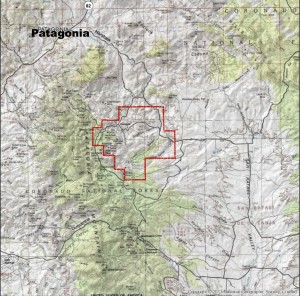
Assist PARA in protecting our precious and imperiled natural resources such as clean water and wildlife, and actively advocate for the preservation of those resources by opposing AZ Mining Inc / Wildcat Silver’s draft EA drilling exploration plan.
Deadline to comment is Monday, April 7, 2014. The Hermosa draft EA is available online at the Forest Service project webpage:http://www.fs.fed.us/nepa/nepa_project_exp.php?project=41158.

Hermosa Drilling Proposal Location
Include your name, postal address, title of the project (Hermosa Drilling Project) and signature (or verification of identity upon request.)
Comments may be submitted as follows:
Email: Electronic comments including attachments may be submitted by email in word (.doc), rich text format (.rtf), text (.txt), portable document format (.pdf), and hypertext markup language (.html) to: comments-southwestern-coronado@fs.fed.us with subject: Hermosa Drilling Project.
Facsimile: 520-388-8305, ATTN: Margie DeRose
U.S. Mail: Coronado National Forest, ATTN: Margie DeRose, 300 W. Congress St., Tucson, AZ 85701
Hand-delivery: 6th floor, 300 W. Congress St., Tucson, AZ 85701. Monday through Friday, 8 a.m. to 4:30 p.m., excluding Federal holidays.
Only individuals who submit comments about this proposed project during this public comment period will be eligible to file an objection.
AZ Mining Inc / Wildcat Silver’s Pre-Feasibility Study contains a wide range of information about the open pit mine they want to dig in the Patagonia Mountains. PARA and Earthworks are coordinating to analyze AZ Mining Inc / Wildcat Silver’s pre-feasibility study so that the community can fully understand the impacts of the proposed open pit mine.
Earthworks is a national non-profit organization based in Washington D.C. that is “dedicated to protecting communities and the environment from the impacts of irresponsible mineral and energy development while seeking sustainable solutions. Earthworks stands for clean water, healthy communities and corporate accountability.”
By teaming with Earthworks and commissioning this report, the dangers of mining in the Patagonia Mountains can no longer be dismissed as opinion, but will present a meaningful and credible analysis highlighting specific and anticipated impacts from the proposed AZ Mining Inc / Wildcat Silver open pit mine.
We are fortunate to have a group of amazing and committed community members and generous donors supporting our work that make everything we do for the Patagonia area possible.
Please consider a gift today to ensure that we have the scientific analyses necessary to actively challenge the Hermosa proposal and AZ Mining Inc / Wildcat Silver’s web of obfuscation. You may contribute securely online at: www.patagoniaalliance.org/donations. Also, please consider a recurring monthly contribution through PayPal.
Every single contribution makes a sizable difference in our organization and ultimately for the community of Patagonia. It is only because of the generous support from people like you that we can undertake this critical work. Thank you!
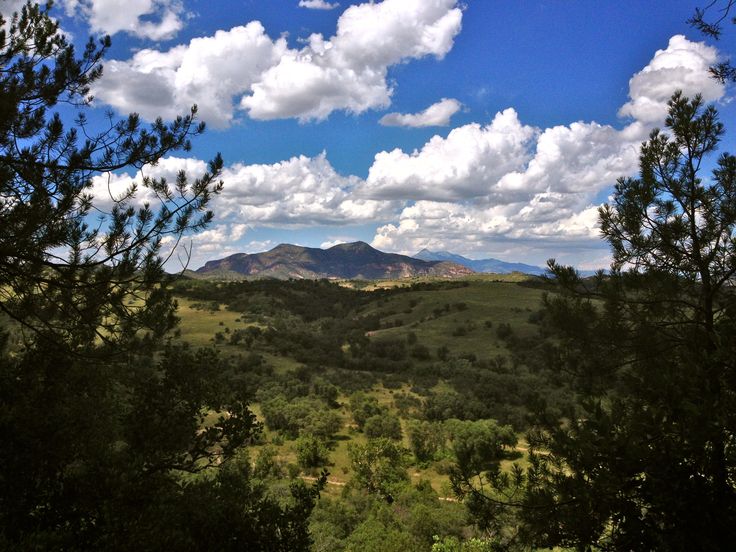
One site of Hermosa Mineral Drilling Proposal: Corral Canyon in the Patagonia Mountains.
Tombstone Arizona has made national headlines regarding its battle with the Forest Service over water rights. For 130 years pipelines have transported water from the Huachuaca Mountains 26 miles to Tombstone. The Monument Fire and subsequent mud slides last year destroyed this pipeline system. Tombstone has been trying to get emergency permission from the Sierra Vista District of the Coronado National Forest to bring in heavy equipment to repair the water system without success. The case has also gone to court, twice. Tombstone has lost both times.
Reasons given by the courts include the question of actual need and urgency of the repairs. Also in question is Tombstone’s entitlement to the water in the national forest. Tombstone claims rights to 25 springs while the Forest Service says they have permits for only 5. The federal government said none of that gives the city unfettered right of access. The Forest Service has also cited the Wilderness Protection Act as a reason for their reluctance to allow the requested repair of the pipeline. Machinery of any kind is banned in a Wilderness Area where the pipeline is located.
Another reason given was the presence of Mexican spotted owls. The owls are a threatened species. Supposedly, their presence is the big reason that the Forest Service wouldn’t grant Tombstone a permit to use heavy equipment to fix the pipeline. I have a hard time believing that one.
Here in the Patagonia Mountains we are lucky to still have Mexican spotted owls. Last year, the Sierra Vista District of the Coronado National Forest granted permission to Arizona Minerals aka Wildcat Silver to start exploratory drilling operations within Mexican spotted owl habitat. This drilling project would have operated 24 hours a day, 7 days a week, for 300 consecutive days. Along with noise and light disturbance there was the extremely high likelihood of destruction of owl habitat. Even the presence of a nearby federally-designated Mexican spotted owl Protected Activity Center didn’t block the approval of the drilling project. We, along with the Defenders of Wildlife and Sky Island Alliance had to sue the Forest Service to stop the drilling project.
It’s not just about the owls. The bigger question is how does the exact same Forest Service office come up with completely opposite policy actions?
U.S. high court denies Tombstone water relief
Sierra Vista Herald Sat, 06/02/2012
Tombstone readies picks and shovels
Sierra Vista Herald 06/07/2012
Spotted owl could be game-changer in Tombstone water war
CNN 06/09/2012
We are thrilled to share this news from the Western Action Mining Project!
“This decision sets a major precedent across the western states,” said Roger Flynn, lead attorney representing the Karuk Tribe of California, and the Director and Managing Attorney of the Western Mining Action Project, a Colorado-based non-profit environmental law firm specializing in mining issues in the West. “The government and miners had argued that the archaic 1872 Mining Law, which is still on the books today, overrides environmental laws such as the Endangered Species Act. The Court flatly rejected that untenable position.” said Flynn.
FOR IMMEDIATE RELEASE
*Federal Ninth Circuit Court of Appeals Rules in Favor of Endangered Species Over 1872 Mining Law* *Strikes Down U.S. Forest Service Approvals of Mining Projects Across West *
June 1, 2012
Contacts: Craig Tucker: Karuk Tribe of California, Klamath River Coordinator, Happy Camp, California. 916-207-8294
Roger Flynn: Attorney, Western Mining Action Project, Lyons, Colorado (303) 823-5738
Happy Camp, California, and San Francisco: In a highly-anticipated decision from the En Banc panel of 11 judges of the federal Ninth Circuit Court of Appeals in San Francisco, the Court today held that the U.S. Forest Service violated the federal Endangered Species Act (ESA) when the agency approved a slew of mining operations in salmon habitat in and along the Klamath River system in northern California. The new decision, issued by a majority of seven judges on the En Banc panel, reversed a lower court decision (issued in 2005) and a previous decision of a 3-judge panel of the Ninth Circuit (issued in 2011). The earlier decisions had affirmed the federal government’s actions in approving numerous “suction dredge” and other mining operations, such as “highbanking” and “motorized sluicing,” in designated “critical habitat” for the Coho Salmon, listed as a threatened species in Southern Oregon and Northern California under the ESA. The case was brought by the Karuk Tribe of California, which initially filed the lawsuit in 2004 in federal court in Oakland.
The Tribe filed the lawsuit to protect the salmon and its habitat, which have been a central part of the Tribe’s existence since time immemorial. Beginning in the early 1990s, a flood of smaller-scale mining operations, primarily suction dredging operators, invaded the Klamath River system to search for gold in and along the banks of these rivers and streams. As described by the Court’s decision, “These miners use gasoline- powered engines to suck streambed material up through flexible intake hoses that are typically four or five inches in diameter. The streambed material is deposited in a tailings pile in or beside the stream. Dredging depths are usually about five feet, but can be as great as twelve feet.” The Court detailed the scientific studies that found that suction dredging in critical species habitat “can directly kill and indirectly increase mortality of fish — particularly … salmonid eggs and early developmental stages.” “Highbanking” and “motorized sluicing” occur mainly outside the river, where mining operators pump water out of the stream to strip the riverbank of materials for processing in sluice boxes, then dump the remaining materials in tailings waste piles along the shore.
Beginning in 2003 and 2004, the Forest Service allowed suction dredging and highbanking/sluicing on more than 35 miles of the Klamath River and its tributaries, without conducting any public environmental reviews, without subjecting its actions to any public notice, and, importantly for this case, without any compliance with the ESA. The Tribe’s lawsuit challenged the agency’s failure to protect the salmon and its habitat, which have been determined by the National Oceanic and Atmospheric Administration (NOAA) to be threatened with extinction. The agency had approved all of the mining via its “Notice of Intent” (NOI) process, which the agency argued exempted itself from compliance with federal environmental and wildlife protection laws.
The Court rejected that claim, concluding that: “We therefore hold that the Forest Service violated the ESA by not consulting with the appropriate wildlife agencies before approving NOIs to conduct mining activities in coho salmon critical habitat within the Klamath National Forest.”
“Today, the Court vindicated our long struggle to protect the salmon and our people, which have been linked together since time immemorial,” said Leaf Hillman, Director of the Karuk Tribe’s Natural Resource Department. “The Forest Service’s decision to place the search for miniscule flakes of gold above the needs of people who rely on clean water, and especially wild salmon, was unconscionable,” continued Hillman. “We had no choice but to challenge the agency’s illegal mining approvals,” said Hillman.
“This decision sets a major precedent across the western states,” said Roger Flynn, lead attorney representing the Tribe, and the Director and Managing Attorney of the Western Mining Action Project, a Colorado-based non-profit environmental law firm specializing in mining issues in the West. “The government and miners had argued that the archaic 1872 Mining Law, which is still on the books today, overrides environmental laws such as the Endangered Species Act. The Court flatly rejected that untenable position.” said Flynn.
Although focused on the mining in northern California, the Forest Service’s practice of failing to consider the ESA when approving smaller-scale mining projects such as suction dredging occurs throughout the West. “Today’s decision sets the proper balance between mining and the protection of clean water and wildlife habitat across the West,” noted Flynn. “The law requires that the federal agencies ensure that mining is responsible and reasonable, and protects communities and the environment. The Court today re-affirmed this guiding principle of federal public land management.” said Flynn.
“To the Karuk people, salmon and free-flowing clean water are essential elements of our culture and heritage,” said Hillman. “With today’s decision, we can begin to repair the damage caused by irresponsible mining and look forward to a brighter future for the salmon and our people.” concluded Hillman.
A copy of today’s decision can be found on the Court’s website at:
http://www.ca9.uscourts.gov/datastore/opinions/2012/06/01/05-16801.pdf